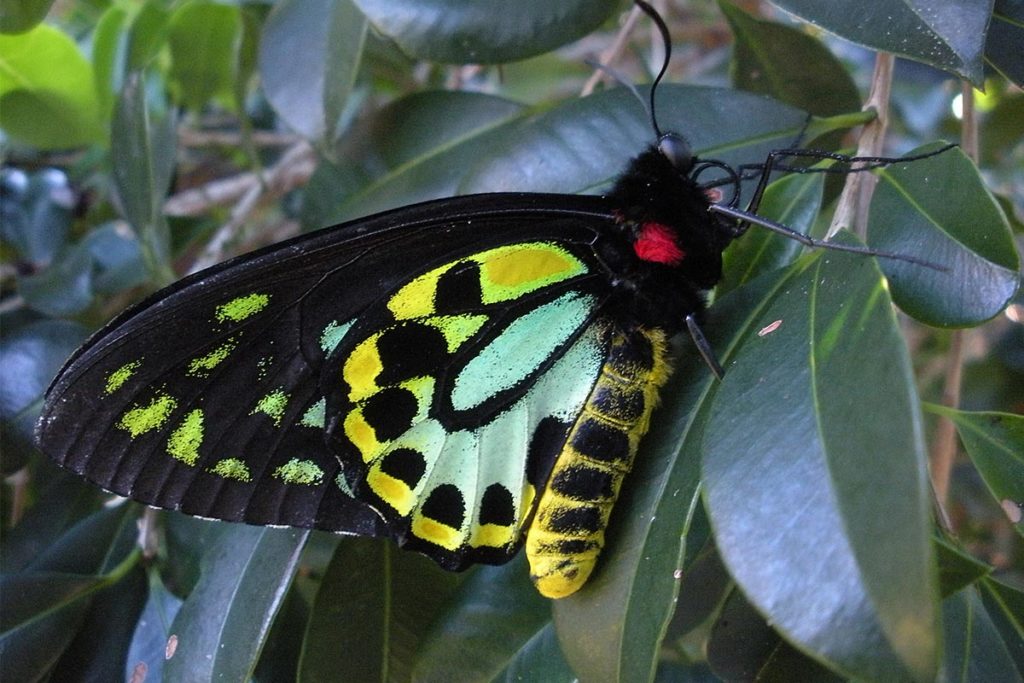ABOUT THE SPECIES
With an average wingspan of 125 mm (male) and 140 mm (female), the Richmond birdwing butterfly is Australia’s largest subtropical butterfly. It was once abundant from Maryborough in southern Queensland to Grafton in northern New South Wales, breeding in rainforest habitat wherever the food plants were plentiful. Much of this land was eagerly sought after for grazing and subtropical agriculture due to its rich soils. In 1870 the butterfly was reported in newspapers as occurring in the thousands on the streets of Brisbane, but by 1926 natural history enthusiasts noticed a massive decline in the south and west of the city. Since 1990, active conservation projects involving members of the community, particularly schoolchildren, were initiated to address the threatening processes that had led to the decline in numbers and distribution of the birdwing. Image courtesy of Ian Gynther.
ABOUT THE ORGANISATION
Wildlife Queensland’s Richmond Birdwing Conservation Network (RBCN) is working to secure the future of the vulnerable Richmond birdwing butterfly by planting and maintaining Richmond birdwing vines at a number of sites and wildlife corridors in South East Queensland that have been identified as vitally important to the survival of the species. The RBCN is also part of a joint captive breeding and release project, with David Fleay Wildlife Park and the Department of Environment and Science, helping to conserve the Richmond birdwing butterfly. Under the breeding program, Richmond birdwings from geographically separate sources have been mated with the aim of producing more genetically diverse offspring. These captive-reared progenies have been reintroduced at selected sites to help restore wild populations. Since the program was initiated in 2008, more than 350 Richmond birdwing individuals, mostly larvae and pupae, have been reintroduced across nine sites in South East Queensland.
Vote for Wildlife Queensland and the Richmond birdwing butterfly in The ANiMOZ Aussie Wildlife Vote 2020 right here!

